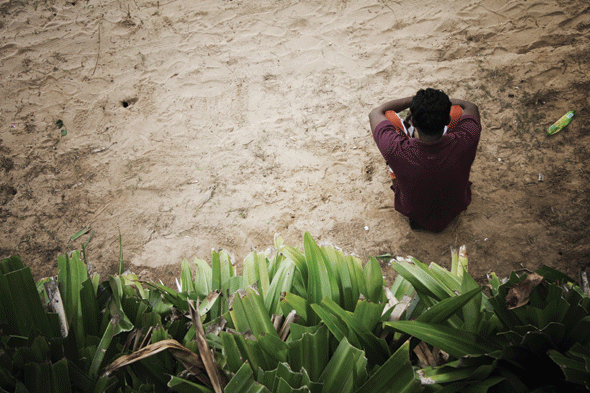 At first the sea appeared to be retreating. There was sand as far as the eye could see. Vacationers sipping papaya juice, and excited children enjoying their holiday, watched the bizarre behaviour of the Indian Ocean. Then, in a flash, it turned on them. The first onslaught of water drenched houses and businesses. Then second and third waves, up to 15 metres high, charged the shore. Terror reigned for the next 50 minutes.
At first the sea appeared to be retreating. There was sand as far as the eye could see. Vacationers sipping papaya juice, and excited children enjoying their holiday, watched the bizarre behaviour of the Indian Ocean. Then, in a flash, it turned on them. The first onslaught of water drenched houses and businesses. Then second and third waves, up to 15 metres high, charged the shore. Terror reigned for the next 50 minutes.
The towering, destructive waves swallowed up thousands of people, homes and businesses. Survivors searched desperately for loved ones, not knowing if they were missing or dead. More than 100,000 residents were without a place to live. For them, the nightmare was just beginning. They found refuge in camps, schools, tents, makeshift huts or stayed with relatives. It was months, even years,
before they had permanent shelter—a place to call home.
On December 26, 2004, a tsunami hit two-thirds of Sri Lanka's coastline, killing 30,000 people and leaving hundreds of thousands more homeless or out of work. Last year I travelled to Sri Lanka to view and document the results of the Tsunami Reconstruction and Development Project, the largest global venture undertaken by The Salvation Army.
For 10 days I travelled the southeast coast of Sri Lanka, known as “the pearl of the Indian Ocean.” As I met victims of the tsunami and saw how The Salvation Army had assisted them, they told me about the day the sea attacked their land. These survivors have much to teach us about resilience, courage and hope.
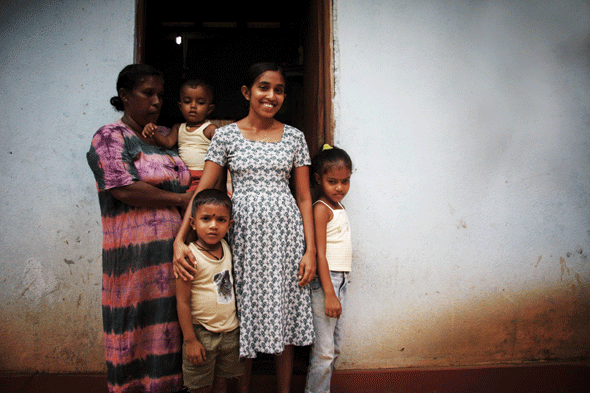 “My husband, newborn son and I were inland at relatives when we heard people screaming: 'The sea is coming!' ” said Thisheni, 21 (pictured with her family). “People were scared, running anywhere to avoid being trapped under the giant wave. My husband was worried about his parents who were living near the beach. He raced to their home to make sure they were safe. That was the last time I saw him.”
“My husband, newborn son and I were inland at relatives when we heard people screaming: 'The sea is coming!' ” said Thisheni, 21 (pictured with her family). “People were scared, running anywhere to avoid being trapped under the giant wave. My husband was worried about his parents who were living near the beach. He raced to their home to make sure they were safe. That was the last time I saw him.”
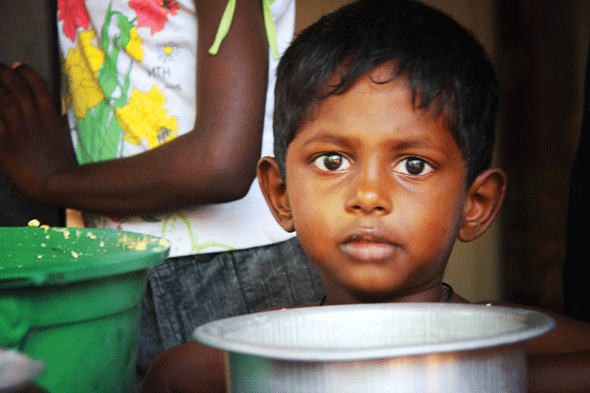 “I lived close to the beach and, while eating breakfast, looked out my window to see an eight-foot wave of water rushing toward my home,” said Igbal, 37. “I grabbed my three children, my parents and my wife, and ran to the main road to safety. A day later I came to see the damage. My house was flattened.”
“I lived close to the beach and, while eating breakfast, looked out my window to see an eight-foot wave of water rushing toward my home,” said Igbal, 37. “I grabbed my three children, my parents and my wife, and ran to the main road to safety. A day later I came to see the damage. My house was flattened.”
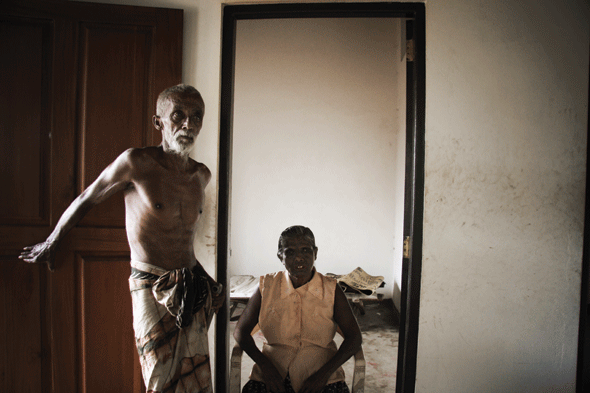 Soyza (pictured with husband) is blind. On Boxing Day 2004 she was alone in her small beachside shack. Her husband, a labourer, was at work. She was washing dishes when she heard people shouting: “The sea is rising!”
Soyza (pictured with husband) is blind. On Boxing Day 2004 she was alone in her small beachside shack. Her husband, a labourer, was at work. She was washing dishes when she heard people shouting: “The sea is rising!”
“My daughter lives close by and came to rescue me,” Soyza said. “We ran as fast as we could because water was washing up the road behind us. Two days later my husband and I returned to our home. Nothing was there. We lost everything. For two years we had no place to call home. The Salvation Army built us this house. My husband can't work. We sleep on the floor, have two small plastic chairs to sit on and have little food. We are happy to be alive. The Salvation Army showed us lots of love and we are so thankful.”
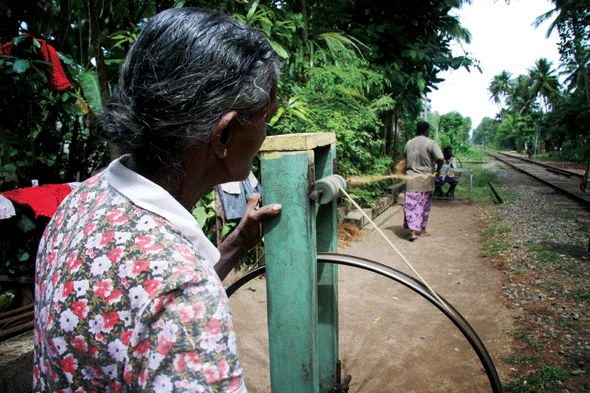 “I thought I would drown,” said one 68-year-old grandmother (left). “The waves were nine feet tall. I swam and swam before I found dry ground.”
“I thought I would drown,” said one 68-year-old grandmother (left). “The waves were nine feet tall. I swam and swam before I found dry ground.”
The tsunami dragged her and her daughter out the front door of their small roadside house. Both the house and small grocery store attached to it were washed away.
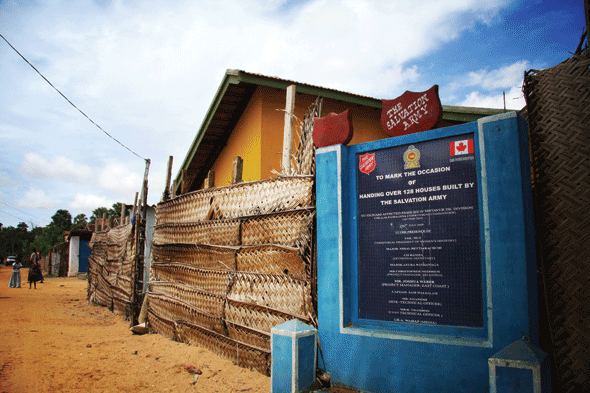
Sri Lankan Relief Effort
The Salvation Army helped rebuild more than 650 homes
The Salvation Army Canada and Bermuda Territory, who was the lead donor, partnered with the Canadian International Development Agency (CIDA), The Salvation Army World Service Office (SAWSO), The Salvation Army Netherlands and Czech Republic Territory and The Salvation Army Sri Lanka Territory to build more than 650 homes in Sri Lanka. This was just the beginning of The Salvation Army's long-term reconstruction and development. Eleven community centres were established, 100 businesses were supported for the purposes of job creation, and 1,300 families were given support and skills training. In total, 45,700 people directly benefited from The Salvation Army Tsunami Reconstruction and Development Project.
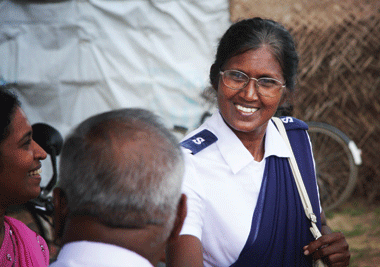 “CIDA was an active partner in the project and worked with The Salvation Army's outstanding team,” said Calvin Piggott, CIDA program manager. “Despite challenges, a greater number of houses, community centres and businesses were restored than projected. Families affected by the tsunami now have improved housing with all the necessary infrastructure, new skills and sources of livelihoods, and new capacity for community mobilization and development.”
“CIDA was an active partner in the project and worked with The Salvation Army's outstanding team,” said Calvin Piggott, CIDA program manager. “Despite challenges, a greater number of houses, community centres and businesses were restored than projected. Families affected by the tsunami now have improved housing with all the necessary infrastructure, new skills and sources of livelihoods, and new capacity for community mobilization and development.”
“Sri Lankans are true heroes,” says Christopher Needham, national development director for The Salvation Army tsunami project. “These survivors of one of the world's largest disasters taught me about community and family, and the strength they both provide.”




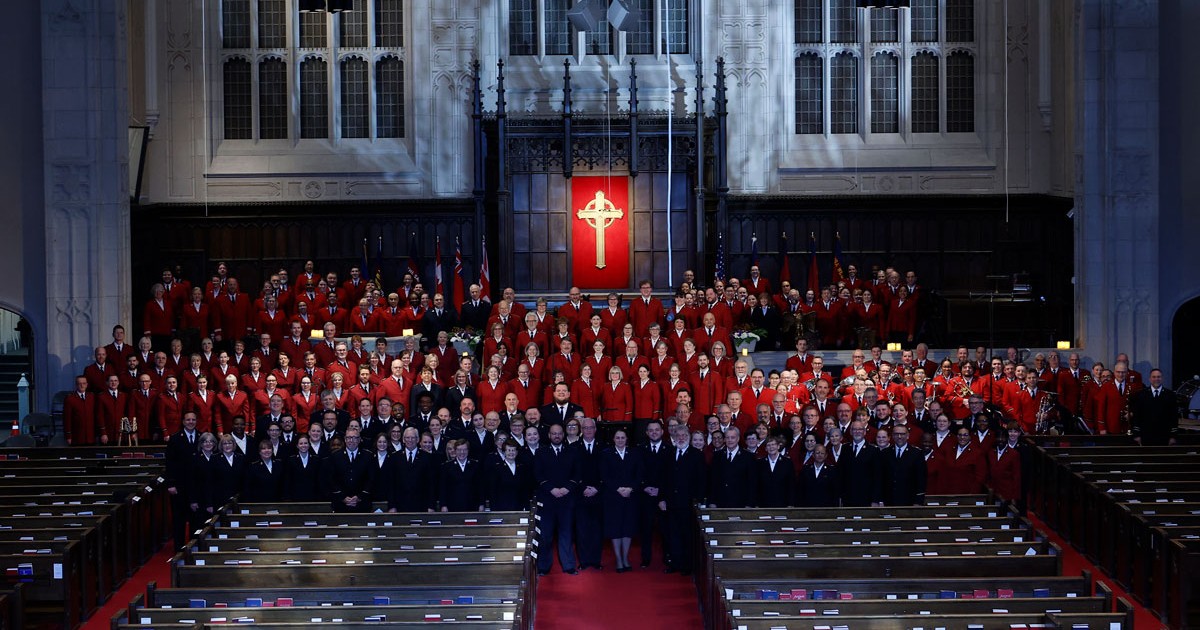
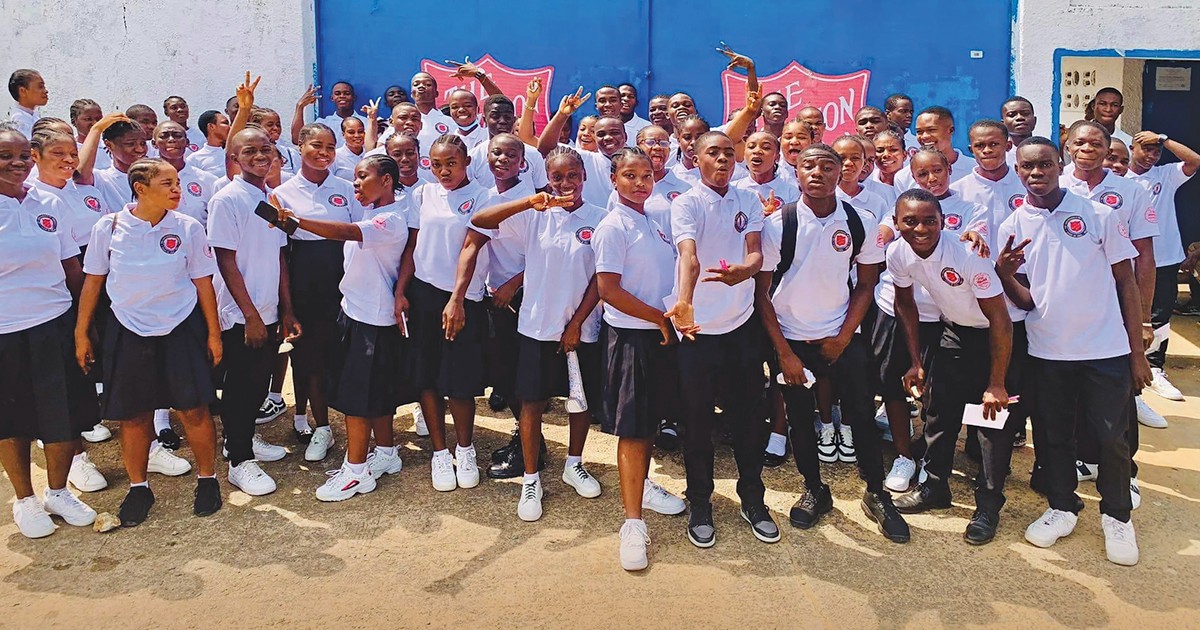
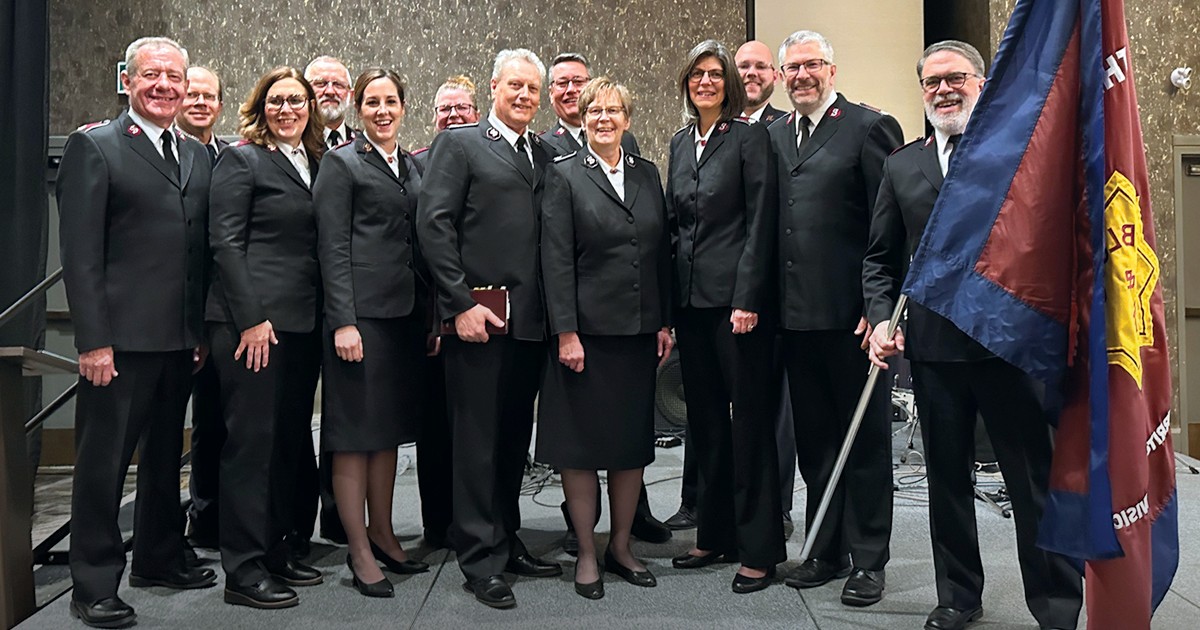


Leave a Comment